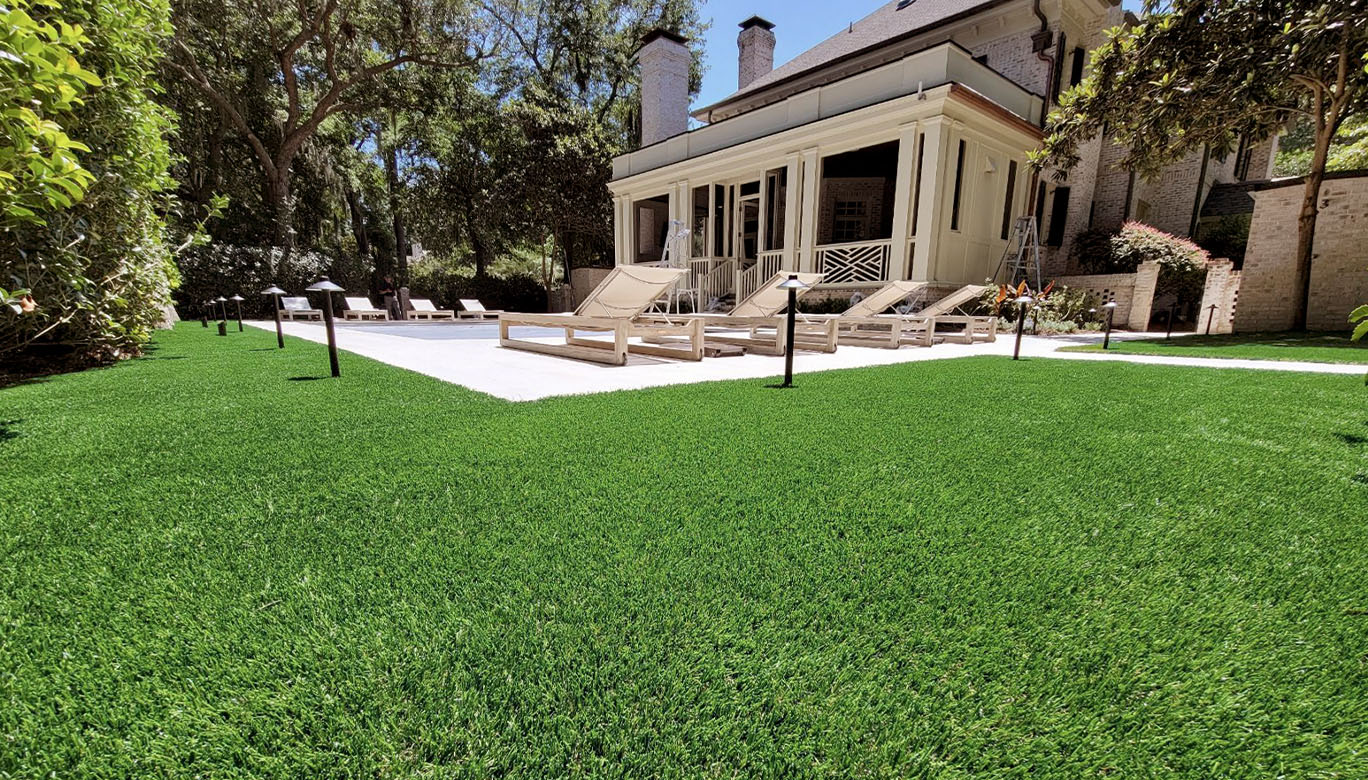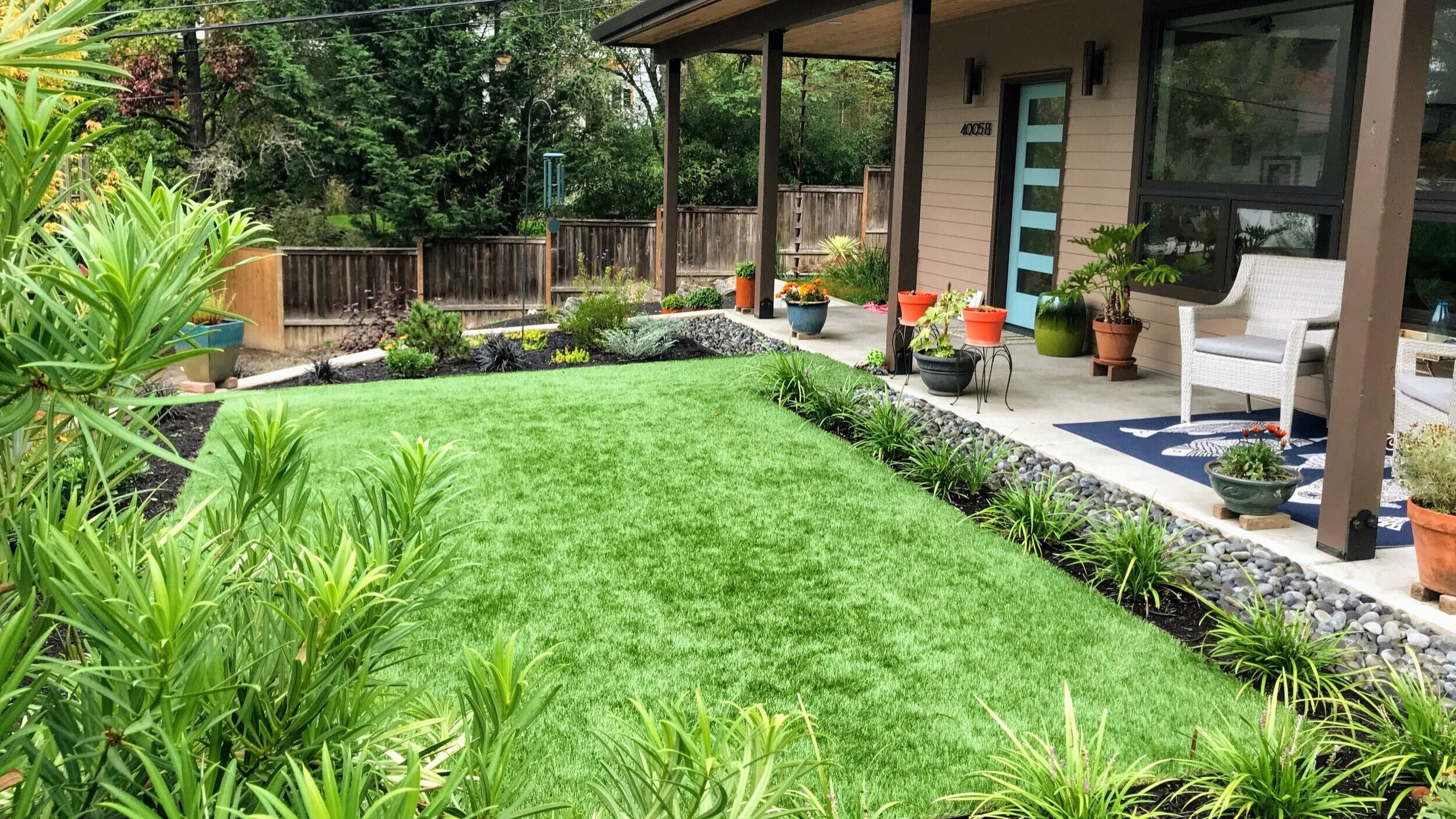Delve Into the Environmental Benefits of Opting for Artificial Lawn Solutions
The adoption of artificial grass options offers an engaging chance to resolve pressing environmental difficulties. By dramatically decreasing water use and decreasing the application of hazardous chemicals, these options not just advertise lasting landscape design yet likewise shield local communities.
Water Conservation Perks
Among the most substantial advantages of man-made turf is its capability to conserve water. Standard grass yards require significant irrigation, specifically in areas prone to dry spell or water constraints. On the other hand, synthetic grass does not require watering, significantly reducing the total need for water sources. This attribute is especially helpful in deserts where water shortage is a pressing concern.
By removing the demand for regular watering, synthetic grass adds to lasting landscape techniques and assists minimize the environmental influence of extreme water consumption. The conservation of water expands to the decrease of drainage, which can lead to dirt disintegration and waterway contamination.
In addition, the setup of artificial grass permits municipalities and home owners to allot water resources extra efficiently, concentrating on necessary usages such as alcohol consumption water and farming. The shift towards synthetic lawn not only promotes accountable water usage however additionally lines up with wider ecological objectives targeted at preserving natural resources.
As neighborhoods progressively focus on sustainability, the water conservation benefits of artificial turf present a compelling situation for its adoption in domestic and industrial landscape design tasks.
Lowered Chemical Use
The change to synthetic grass considerably decreases the reliance on chemical treatments generally used in natural lawn upkeep. Traditional grass management usually includes the application of chemicals, plant foods, and herbicides to promote development and control bugs. These chemicals can present dangers to human health, local wildlife, and the atmosphere, adding to dirt and water contamination.
In contrast, synthetic grass removes the requirement for these dangerous compounds. When mounted, it needs minimal maintenance, mainly including routine cleaning and seldom infill replenishment. This reduction in chemical use not just profits the instant environment however also adds to broader eco-friendly stability. By decreasing the launch of synthetic substances into the ecosystem, synthetic grass promotes much healthier soil and water supply.
Moreover, the lack of chemical drainage associated with fabricated lawn setups aids safeguard regional rivers from contamination, supporting marine life and maintaining biodiversity. Turf installation phoenix az. As areas significantly prioritize sustainable techniques, choosing man-made lawn presents a viable service that lines up with ecological preservation objectives. With this change, residential property proprietors can enjoy lavish environment-friendly spaces without compromising environmental wellness, paving the means for a much more sustainable future
Lower Carbon Footprint

Additionally, the installation of synthetic grass can cause significant water conservation. All-natural grass require considerable amounts of water for watering, which not only contributes to the carbon footprint connected with water extraction and treatment but likewise pressures neighborhood water sources. In comparison, synthetic grass needs very little maintenance, calling for no watering, thus substantially lowering water use and its linked power costs.
Additionally, the durability of synthetic grass adds to its lower carbon impact. With a lifespan of approximately 15 years or even more, the requirement for frequent replacements is diminished, resulting in much less waste and reduced energy consumption in production and getting rid of standard turf choices. On the whole, synthetic grass provides a lasting alternative for environmentally conscious landscape design.
Environment Conservation
Habitat preservation is a crucial factor to consider in the discussion over landscaping options, specifically when contrasting fabricated grass to natural lawn. All-natural lawn lawns commonly require substantial maintenance, including the use of fertilizers, chemicals, and herbicides, which can negatively affect local ecosystems. These chemicals can seep right into the dirt and waterways, damaging native vegetation and animals and disrupting regional habitats.
In comparison, artificial turf presents a chance to lower the ecological footprint of landscape design. By going with artificial turf, homeowners can decrease the disruption of all-natural environments related to traditional lawn care techniques. Man-made lawn eliminates the requirement for unsafe chemicals, consequently protecting close-by wild animals and keeping the integrity of surrounding ecological communities. The installation of man-made lawn can lead to the conversion of previous grass areas right into even more biodiverse landscapes, such as pollinator yards or native plant areas, which can support local wild animals.
Ultimately, the change to synthetic grass not just saves water and minimizes maintenance efforts but additionally cultivates an extra unified relationship in between human tasks and the natural surroundings, advertising additional hints habitat conservation in this link the procedure.
Long-Term Sustainability
Long-lasting sustainability is an important consider examining the advantages of artificial lawn over traditional turf lawns. Among the most significant advantages of synthetic grass is its durability; it can last approximately 15-20 years with very little maintenance, whereas natural lawn calls for constant reseeding and replacement. This durability lowers the requirement for constant sources, such as water, fertilizers, and pesticides, which are important for maintaining a healthy and balanced yard yard.
In addition, man-made turf adds to a reduction in carbon exhausts associated with grass care tools. Typical yards frequently call for gas-powered mowers, leaners, and blowers, all of which add to air pollution. Arizona turf. In comparison, artificial grass gets rid of the demand for such equipment, promoting a cleaner setting
Additionally, the production of synthetic grass progressively utilizes recycled materials, enhancing its sustainability account. As producers embrace environmentally friendly techniques, the ecological footprint of man-made lawn remains to decrease.

Final Thought
The adoption of artificial lawn options presents substantial ecological advantages, consisting of considerable water preservation, minimized reliance on hazardous chemicals, and a reduced carbon footprint. In addition, synthetic grass help in protecting all-natural habitats by decreasing land disturbance and advertising long-term sustainability via the use of sturdy materials. Jointly, these variables emphasize the potential of synthetic grass to add favorably to environmental wellness and supply a feasible alternative to standard landscaping important link practices in a progressively resource-conscious world.
In comparison, artificial grass does not require watering, dramatically reducing the total need for water sources. By minimizing the release of synthetic substances into the community, man-made lawn advertises much healthier dirt and water systems.
Furthermore, the installation of synthetic grass can result in considerable water preservation. In comparison, fabricated lawn requires marginal upkeep, needing no watering, therefore dramatically reducing water use and its associated power expenses.

 Val Kilmer Then & Now!
Val Kilmer Then & Now! Danica McKellar Then & Now!
Danica McKellar Then & Now! Samantha Fox Then & Now!
Samantha Fox Then & Now! McKayla Maroney Then & Now!
McKayla Maroney Then & Now! Megyn Kelly Then & Now!
Megyn Kelly Then & Now!